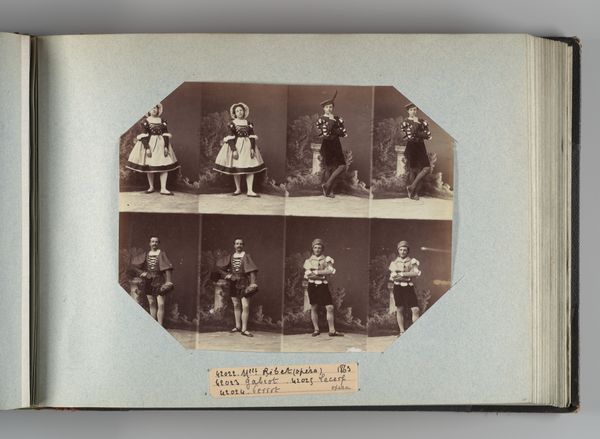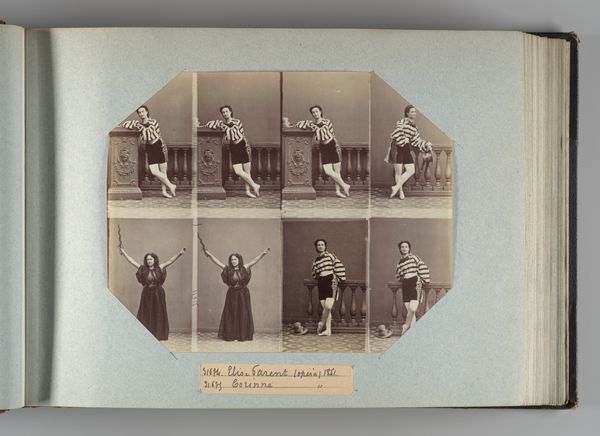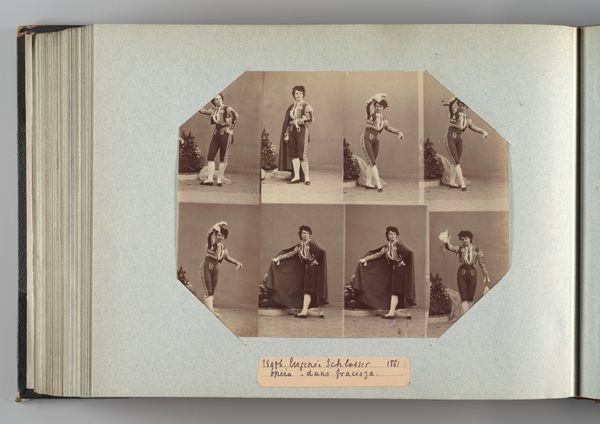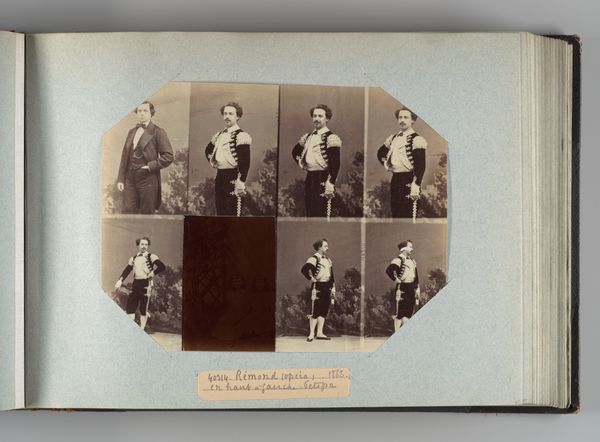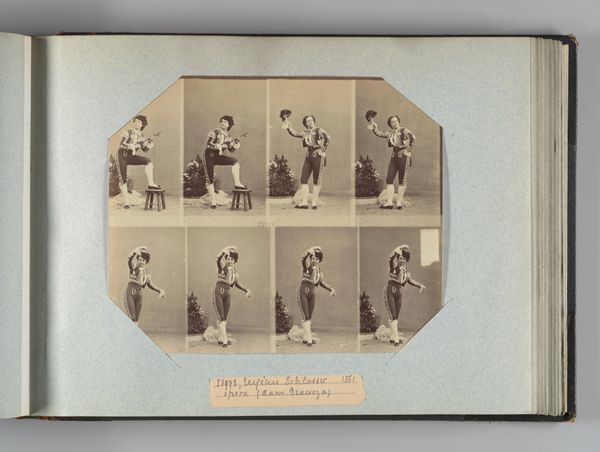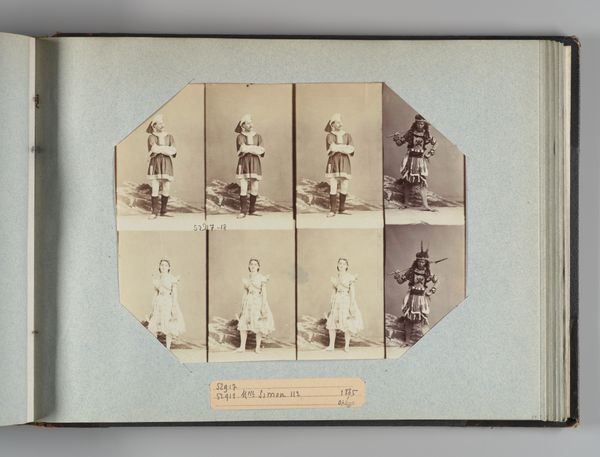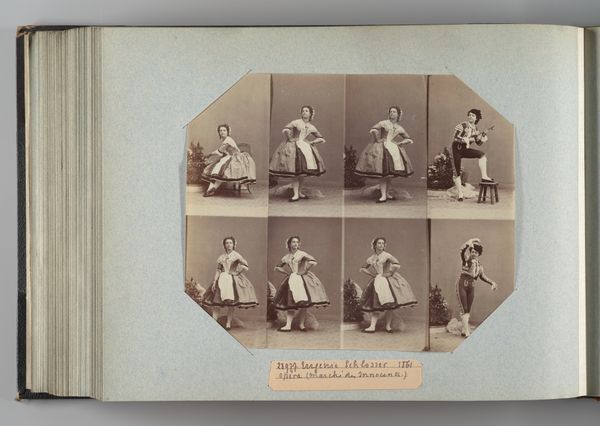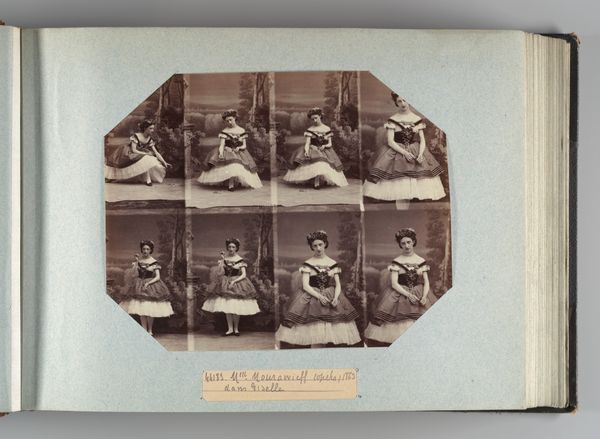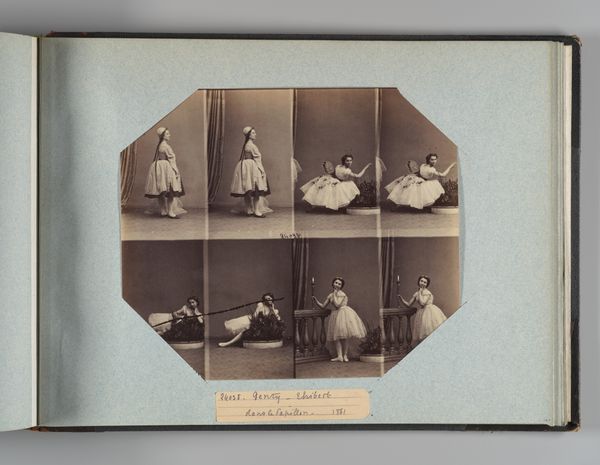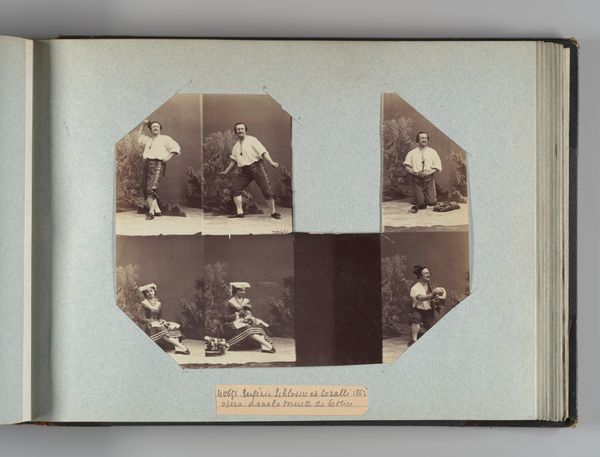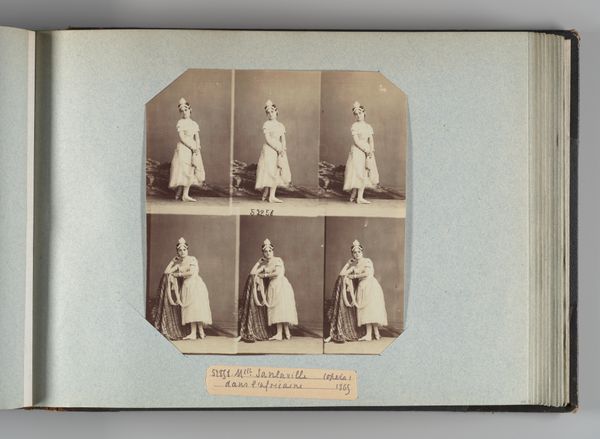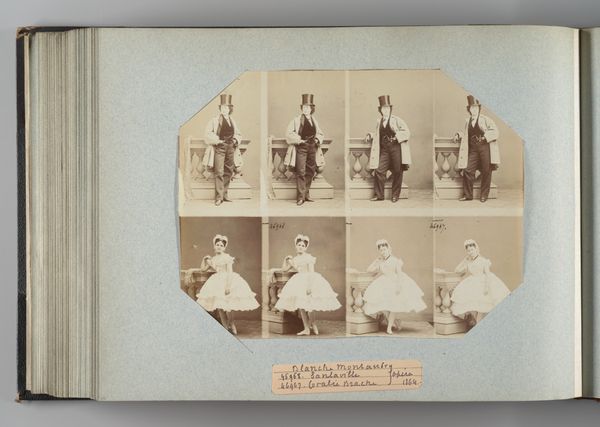![Pluque[?]; Remond by André-Adolphe-Eugène Disdéri](/_next/image?url=https%3A%2F%2Fd2w8kbdekdi1gv.cloudfront.net%2FeyJidWNrZXQiOiAiYXJ0ZXJhLWltYWdlcy1idWNrZXQiLCAia2V5IjogImFydHdvcmtzLzhjMDY5MWUwLWRkNjYtNGRjMS1iZjk4LTcwMjM1MWNhNDA3ZC84YzA2OTFlMC1kZDY2LTRkYzEtYmY5OC03MDIzNTFjYTQwN2RfZnVsbC5qcGciLCAiZWRpdHMiOiB7InJlc2l6ZSI6IHsid2lkdGgiOiAxOTIwLCAiaGVpZ2h0IjogMTkyMCwgImZpdCI6ICJpbnNpZGUifX19&w=3840&q=75)
photography
#
portrait
#
16_19th-century
#
photography
#
academic-art
Dimensions: Image: 7 3/8 × 9 1/4 in. (18.8 × 23.5 cm) Album page: 10 3/8 × 13 3/4 in. (26.3 × 35 cm)
Copyright: Public Domain
Curator: Immediately, the organized presentation of these portraits gives me the feeling of an almost scientific endeavor—or a taxonomic display. Editor: Precisely. What we are viewing is an album page holding eight photographic portraits, attributed to André-Adolphe-Eugène Disdéri. The piece is called "Pluque[?]; Remond," dating to 1864. It currently resides in the Metropolitan Museum of Art. Curator: Pluque and Remond—they're captured here as performers. Are we sure about the identification? The costumes…they seem almost allegorical in a way. Each figure appears multiple times, in different poses, within what seems like a designed theatrical space. I wonder about the cultural significance attached to theatrical professions at this time. Editor: The placement mimics a commercial display. Disdéri was a businessman as well as an artist, patenting a carte-de-visite format for photography that boosted photography's accessibility to the middle class. We should remember how relatively new and fascinating this photographic technology would have been at the time. Curator: That's true, but still the framing—why a sequence of gestures, so methodically captured? To what effect does repetition amplify the meaning? Perhaps Disdéri wished to investigate a psychological profile using external representation? Or just to document poses or acting positions that reference specific characters? Editor: These men appear as both themselves and stage characters. As photography rose in social importance, performance became linked to not just staged scenarios but personal identity itself. The rise in prominence for images in the public sphere surely influenced conceptions of the self and performativity. Curator: Absolutely. It highlights the interplay between representation and reality that would soon redefine society's engagement with image and identity. This piece feels so emblematic of its era—this period of great industrialization and nascent modernity. Editor: Agreed, it’s a really rich distillation of the period’s fixations. Curator: An encapsulation. Editor: Precisely.
Comments
No comments
Be the first to comment and join the conversation on the ultimate creative platform.


